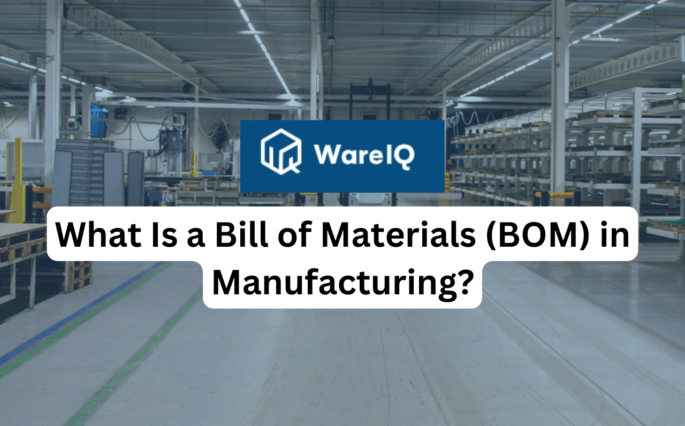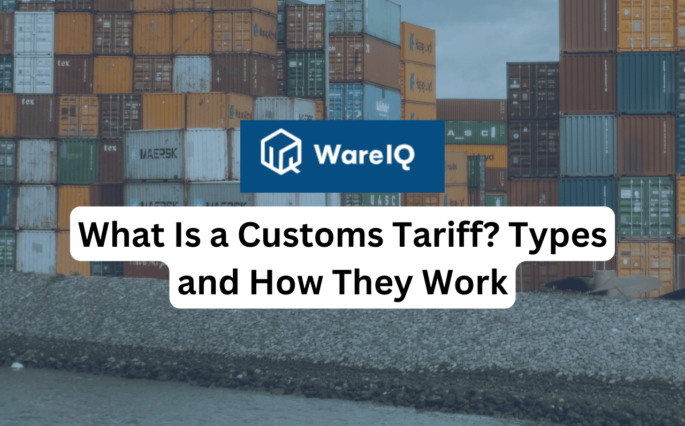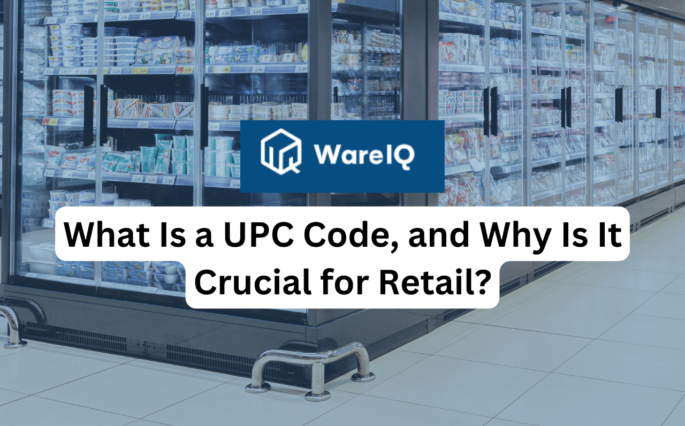Quick Commerce 101: Understanding the Basics and Benefits for Consumers and Businesses

In the fast-paced digital age, the demand for instant gratification has extended beyond information and entertainment into commerce. Enter Quick Commerce, or Q Commerce, a revolutionary retail model that promises to deliver goods to consumers in record time, often within an hour of placing an order. This emerging trend is transforming how businesses operate, and consumers shop, making it a critical development in the retail landscape.
Quick Commerce leverages cutting-edge technology, efficient logistics, and strategic partnerships to meet the growing consumer expectation for speed and convenience. As businesses adapt to this new model, understanding its fundamentals and benefits becomes essential for staying competitive. This article delves into the basics of Quick Commerce, exploring its evolution, operational mechanics, and the advantages it offers to both consumers and businesses.
- What Is Quick Commerce?
- Differentiation From Traditional E-commerce
- What Are the Components of Quick Commerce
- Examples of Quick Commerce
- The Evolution of Quick Commerce
- How Quick Commerce Works?
- Benefits of Quick Commerce for Consumers
- Benefits of Quick Commerce for Businesses
- Challenges in Implementing Quick Commerce
- Future of Quick Commerce
- How does WareIQ's fulfillment solution streamline quick commerce operations?
- Conclusion
- FAQs About Quick Commerce
What Is Quick Commerce?
Quick Commerce, commonly called Q Commerce, is an innovative retail model emphasising speed and convenience in delivering goods. Unlike traditional e-commerce, which typically involves delivery times ranging from one day to several days, Quick Commerce aims to deliver products to customers within a concise timeframe, often within an hour or two. This rapid delivery model is designed to meet consumers’ immediate needs, providing a level of service that was previously unattainable in the retail industry.
The essence of Quick Commerce lies in its ability to cater to the growing demand for instant gratification. In an era where consumers expect everything at their fingertips, Quick Commerce bridges the gap between online shopping and the immediacy of physical retail stores. It leverages advanced technology, streamlined logistics, and strategic geographic placement of fulfilment centres to ensure that products are delivered swiftly and efficiently.
Differentiation From Traditional E-commerce
The primary distinction between Quick Commerce and traditional e-commerce lies in the speed and logistics of delivery. Traditional e-commerce operates on a model where products are stored in centralised warehouses and shipped over longer distances, resulting in delivery times spanning several days. In contrast, Quick Commerce utilises a decentralised network of smaller, strategically located fulfilment centres, often called micro-fulfilment centres or dark stores, closer to the consumer base. This proximity significantly reduces transit times and enables faster delivery.
Critical differences between Quick Commerce and traditional e-commerce include:
- Speed: Quick Commerce focuses on delivering goods within an hour or two, whereas traditional e-commerce delivery times range from one day to several days.
- Proximity: Quick Commerce uses micro-fulfilment centres near high-demand areas, while traditional e-commerce relies on large, centralised warehouses.
- Inventory Management: Quick Commerce requires real-time inventory management and advanced demand forecasting to ensure products are available for immediate delivery.
- Delivery Methods: Quick Commerce often employs various rapid delivery methods, including bike couriers, motorbikes, and small delivery vehicles, to navigate urban environments quickly.
What Are the Components of Quick Commerce
Quick Commerce is a complex system that integrates several components to function effectively:
- Technology: Advanced technology is at the heart of Quick Commerce. This includes AI and machine learning algorithms for demand forecasting, real-time inventory management systems to track stock, and route optimisation software to ensure the fastest delivery paths.
- Logistics: Efficient logistics are crucial for Quick Commerce. This involves strategically placing micro-fulfilment centres to minimise delivery times and a network of couriers capable of rapid delivery.
- Supply Chain Management: A robust supply chain is essential for Quick Commerce. This includes having reliable suppliers, effective inventory replenishment processes, and seamless coordination between various parts of the supply chain to avoid delays.
- Customer Interface: User-friendly apps and websites are integral to the Quick Commerce experience. These platforms must be intuitive, allowing customers to place orders quickly and track their deliveries in real-time.
Examples of Quick Commerce
Several companies have successfully implemented Quick Commerce, setting benchmarks in the industry:
- Amazon Prime Now: Amazon’s Prime Now service offers ultra-fast delivery of everyday items, groceries, and other essentials within one to two hours.
- Gopuff: Gopuff operates micro-fulfilment centres in various cities, delivering convenience store items and other products in under an hour.
- DoorDash and Uber Eats: Originally focused on food delivery, these companies have expanded their services to include rapid delivery of groceries and other goods, leveraging their existing logistics networks.
The Evolution of Quick Commerce
The concept of Quick Commerce has its roots in the evolving demands of consumers and technological advancements. The rise of e-commerce in the early 2000s laid the foundation, but the advent of smartphones and mobile internet catalysed the shift towards quicker delivery models. Companies like Amazon and Alibaba pioneered faster delivery options, setting new standards for consumer expectations.
Key Milestones:
Several milestones mark the evolution of Quick Commerce:
- 2010s: Introduction of same-day delivery services by major e-commerce players.
- 2015-2020: Emergence of specialised Quick Commerce startups focusing on ultra-fast delivery.
- 2020-Present: Accelerated growth due to the COVID-19 pandemic, which increased reliance on home delivery services.
How Quick Commerce Works?
Operational Model
Quick Commerce operates on a model that integrates advanced technology, efficient logistics, and a robust supply chain. Key components include:
- Technology: Using AI and machine learning for demand forecasting, inventory management, and route optimisation.
- Logistics: Deploying a network of micro-fulfilment centers close to high-demand areas.
- Supply Chain: Streamlined processes from suppliers to fulfilment centres, ensuring rapid stock replenishment.
Benefits of Quick Commerce for Consumers
Convenience and Speed of Delivery
One of Quick Commerce’s most significant advantages for consumers is the unparalleled convenience and speed of delivery. With goods arriving within an hour or two, consumers can meet their immediate needs without leaving their homes. This level of service is particularly beneficial for urgent requirements, such as groceries, pharmaceuticals, and other daily essentials.
Enhanced Shopping Experience
Quick Commerce enhances the shopping experience by providing a seamless and efficient service. The ease of placing an order through user-friendly apps and the reliability of fast delivery results in higher customer satisfaction and loyalty. Consumers can shop from the comfort of their homes, knowing that their purchases will arrive promptly.
Access to a Wider Range of Products
Quick Commerce platforms often partner with diverse retailers and suppliers, offering consumers access to a broad range of products. Consumers can find what they need quickly and easily, from fresh produce to electronics. This extensive product availability and rapid delivery sets Quick Commerce apart from traditional retail models.
Benefits of Quick Commerce for Businesses
Increased Sales and Revenue Opportunities
Quick Commerce opens up new sales and revenue opportunities for businesses by tapping into the growing demand for instant delivery. By offering rapid fulfilment options, companies can attract more customers and increase the frequency of purchases. This model is particularly effective for impulse buys and high-turnover products.
Improved Customer Satisfaction and Loyalty
Quick Commerce significantly enhances customer satisfaction by meeting the modern consumer’s demand for speed and convenience. Satisfied customers are more likely to become repeat buyers and brand advocates, driving long-term loyalty and growth. Businesses that excel in Quick Commerce can differentiate themselves from competitors and build a loyal customer base.
Enhanced Operational Efficiency and Competitiveness
Implementing Quick Commerce requires businesses to optimise their operations and supply chain processes. This optimisation leads to greater efficiency, reduced waste, and improved inventory management. Additionally, companies that adopt Quick Commerce can stay competitive in a rapidly changing retail landscape, positioning themselves as leaders in innovation and customer service.
Challenges in Implementing Quick Commerce
Logistical and Infrastructural Challenges
While Quick Commerce offers numerous benefits, it also presents significant logistical and infrastructural challenges. Businesses must invest in building a network of micro-fulfilment centres, managing real-time inventory, and coordinating fast deliveries. Ensuring seamless coordination between various supply chain components is crucial for success.
Cost Implications and Profitability Concerns
The cost of implementing Quick Commerce can be high, with investments needed in technology, infrastructure, and logistics. Businesses must carefully evaluate the cost-benefit ratio to ensure profitability. Balancing the expenses associated with rapid delivery against the potential revenue gains is a critical consideration.
Technological and Integration Issues
Effective Quick Commerce relies on advanced technology for demand forecasting, route optimisation, and real-time inventory management. Businesses may face challenges in integrating these technologies into their existing systems. Ensuring that all technological components work together seamlessly is essential for operational efficiency and customer satisfaction.
Future of Quick Commerce
Emerging Trends and Innovations
Emerging trends and innovations are shaping the future of Quick Commerce. Advances in artificial intelligence, drone delivery, and autonomous vehicles are poised to revolutionise the industry. These technologies will further reduce delivery times and enhance operational efficiency, making Quick Commerce even more attractive to consumers and businesses.
Predictions for Future Development
Quick Commerce will likely become an integral part of the retail landscape as consumer expectations evolve. Businesses that adapt to this model will benefit from increased customer loyalty and market share. The continued integration of cutting-edge technologies will drive the evolution of Quick Commerce, setting new standards for speed, convenience, and efficiency.
How does WareIQ’s fulfillment solution streamline quick commerce operations?
WareIQ’s fulfillment solution allows you to regionally place your inventory to fulfill purchase orders from Blinkit, Zepto, and Swiggy Instamart with a fully compliant solution. Drive frequent replenishments to multiple dark stores, on schedule and with Proof of Delivery.
Our solution includes:
- Local Fulfillment Centers: Our pan-India network of fulfillment centers function as feeder warehouses to send inventory on time to Blinkit, Zepto, and Instamart dark stores
- PO Creation & Management Platform: Our platform integrates with your OMS/WMS/ERP to get all the order data & enables you to create & track POs in real-time
- Trained Operations Team: Our team of seasoned operations experts ensures all your POs are prepared accurately as per SOP and dispatched on time to dark stores
- Delivery as per Appointment: We are integrated with the top courier partners and our team ensures all your POs are dispatched as per appointment taken from dark stores
For more please check – WareIQ’s Quick Commerce Fulfillment Services
Conclusion
Quick Commerce is transforming the retail industry by offering unparalleled speed and convenience in product delivery. For consumers, it means access to a wide range of products with minimal waiting time, enhancing their shopping experience. It presents opportunities for increased sales, improved customer satisfaction, and operational efficiency for businesses. Despite the challenges, the future of Quick Commerce looks promising, with continuous advancements in technology paving the way for further innovation and growth.
Related read: Top Quick Commerce Comapnies In India
FAQs About Quick Commerce
What is Quick Commerce?
Quick Commerce, or Q Commerce, is a retail model focused on delivering goods to consumers within a concise time frame, often within one to two hours.
How does Quick Commerce differ from traditional e-commerce?
Unlike traditional e-commerce, which typically has longer delivery times, Quick Commerce uses a network of micro-fulfillment centers to ensure rapid delivery.
What are the benefits of Quick Commerce for consumers?
Benefits include convenience, speed of delivery, and access to a wide range of products.
What are the challenges of implementing Quick Commerce for businesses?
Challenges include logistical and infrastructural issues, cost implications, and technological integration.
What is the future of Quick Commerce?
Emerging technologies like AI, drone delivery, and autonomous vehicles will drive the future of Quick Commerce, further enhancing speed and efficiency.








